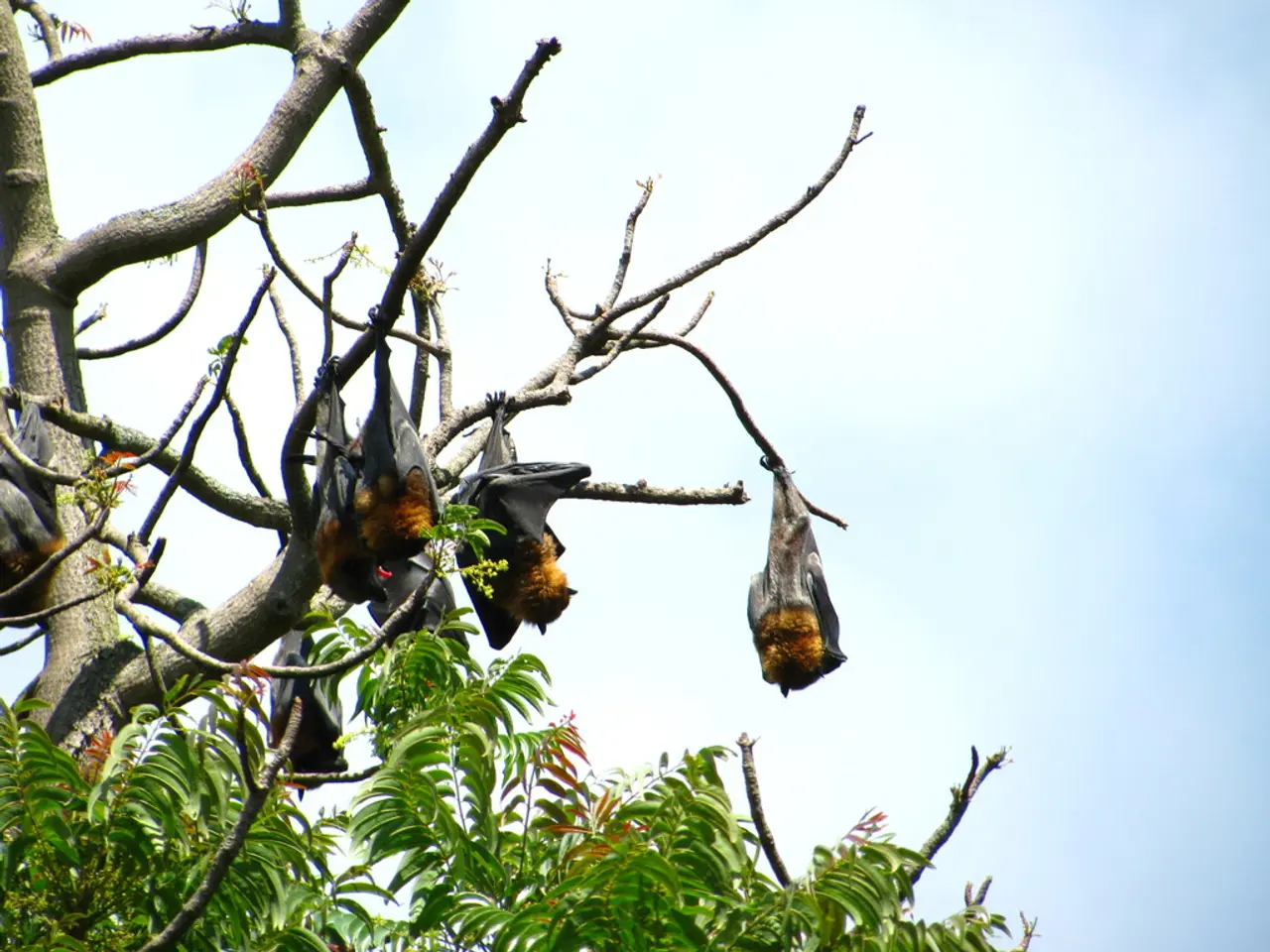Origins and Transmission Methods of the Coronavirus (COVID-19)
In the ongoing battle against the COVID-19 pandemic, it is essential to equip ourselves with accurate and reliable information. Here is a summary of the key facts surrounding the virus's origins, symptoms, and prevention measures.
Origins
The suspected origin of the SARS-CoV-2 virus is a natural crossover event from animals to humans, with genomic evidence indicating that its ancestor virus originated in horseshoe bats. The virus likely spilled over to humans through an intermediate animal host, although the exact transmission pathway is not definitively established. Early cases of COVID-19 were clustered around a live-animal market in Wuhan, China, where wildlife was sold, supporting the zoonotic origin theory.
While an alternative hypothesis that the virus accidentally escaped from a laboratory has been investigated, it is generally considered unlikely by the majority of virologists due to a lack of supporting evidence and genomic analysis ruling out genetic manipulation. Conspiracy theories about intentional engineering or lab origin have been widely debunked.
Symptoms
Common symptoms of COVID-19 include a fever, breathlessness, a cough, a sore throat, a headache, muscle pain, chills, and a new loss of taste or smell. Older adults and people with chronic health conditions such as heart conditions, kidney disease, COPD, obesity, sickle cell disease, a weakened immune system, type 2 diabetes, and solid organ transplant recipients are at higher risk of severe illness.
If difficulty breathing, lasting chest pain or pressure, confusion, or a bluish tint to the lips or face occur, contact the emergency services immediately.
Prevention Measures
The best way to prevent the virus from spreading is by avoiding close contact with people with COVID-19 and washing the hands regularly. It is recommended to wash the hands with soap and water for at least 20 seconds per time, particularly after being in public places.
When soap is not available, use a hand sanitizer with at least 60% alcohol. Anyone who may have COVID-19 should contact their healthcare provider. Anyone who has regular contact with people with COVID-19 should also wear a face mask.
Most people who develop COVID-19 only experience mild symptoms that should go away after a few days. However, the risk of developing severe illness is higher for certain groups, including older adults and those with pre-existing health conditions.
Governments, public bodies, and other organizations are taking measures to prevent the spread of SARS-CoV-2. People with COVID-19 should stay at home and avoid contact with other people to prevent the illness from spreading. The risk of developing COVID-19 is low for most people, but it is changing as the virus spreads, particularly in Europe and the United States. The risk of coming into contact with the virus depends on how far it has spread in a person's local area.
Stay informed, stay safe, and follow the guidance of your local health authorities to help combat the spread of COVID-19.
- Besides COVID-19, other viral infections like the flu are also infectious and pose a threat to public health.
- Scientists continue to study the origins of SARS-CoV-2, with a zoonotic origin being the most likely scenario.
- Horseshoe bats and an intermediate animal host are believed to be the origin of the SARS-CoV-2 virus.
- The virus's potential transmission pathway from animals to humans is not yet conclusively determined.
- The early cases of COVID-19 were linked to a live-animal market in Wuhan, China, supporting the zoonotic origin theory.
- Disregard conspiracy theories suggesting the virus was artificially engineered or escaped from a laboratory.
- Genomic analysis has ruled out genetic manipulation as a cause for the emergence of the SARS-CoV-2 virus.
- Common symptoms of COVID-19 include fever, breathlessness, cough, and loss of taste or smell.
- Older adults and people with various chronic health conditions are at a higher risk of severe illness from COVID-19.
- Seek immediate medical attention if difficulty breathing, chest pain, confusion, or a bluish tint to the lips or face is experienced.
- Maintaining proper hygiene is crucial in preventing the spread of COVID-19 by avoiding close contact and washing hands regularly.
- Hand sanitizer with at least 60% alcohol can be used when soap and water are not available.
- Those who may have COVID-19 should contact their healthcare provider as soon as possible.14.Face mask usage is recommended for those with regular contact with people with COVID-19.
- Most people affected by COVID-19 recover within a few days with mild symptoms, but the risk of developing severe illness is higher for certain groups.
- Implementing measures to prevent the spread of SARS-CoV-2 is crucial for governments, public bodies, and organizations.
- Staying home and avoiding contact with others if infected is essential for preventing the virus from spreading.
- Stay informed and follow guidance from local health authorities to help curb the spread of COVID-19.
- Proper sleep, nutritious diet, mental health therapies and treatments, and chronic disease management are all essential components of overall health and wellness.
- Adopting a fitness and exercise routine, maintaining skin care, investing in medicare, and using CBD for pain management are aspects of lifestyle that support well-being.
- Climate change, finance, space and astronomy, cybersecurity, lifestyle, fashion and beauty, food and drink, personal finance, gadgets, data and cloud computing, technology, artificial intelligence, relationships, travel, shopping, sports, and weather are other topics that affect people's lives and the environment, requiring attention and continues learning.






